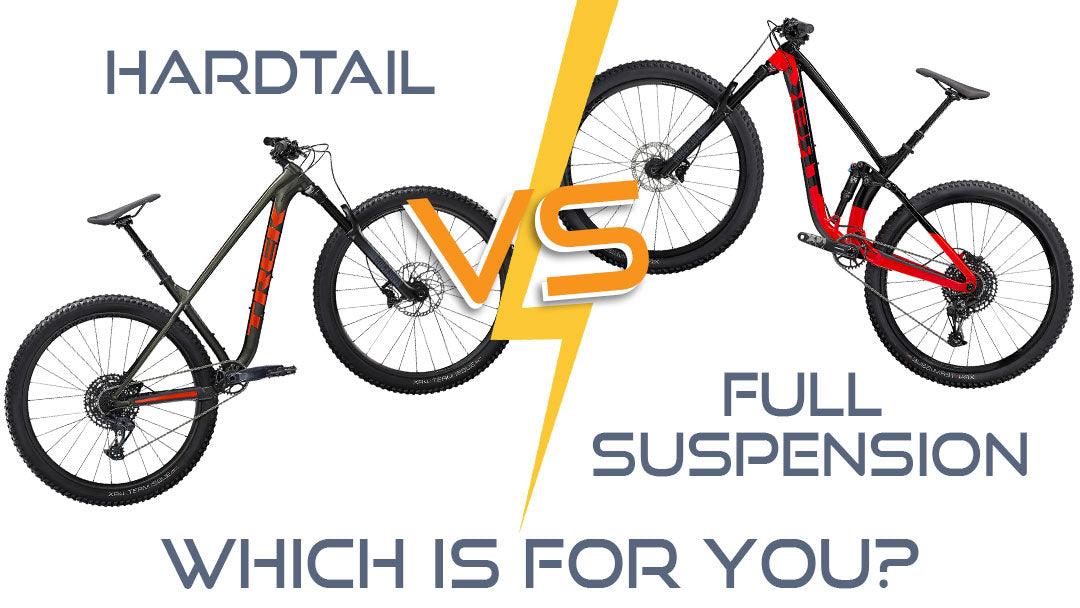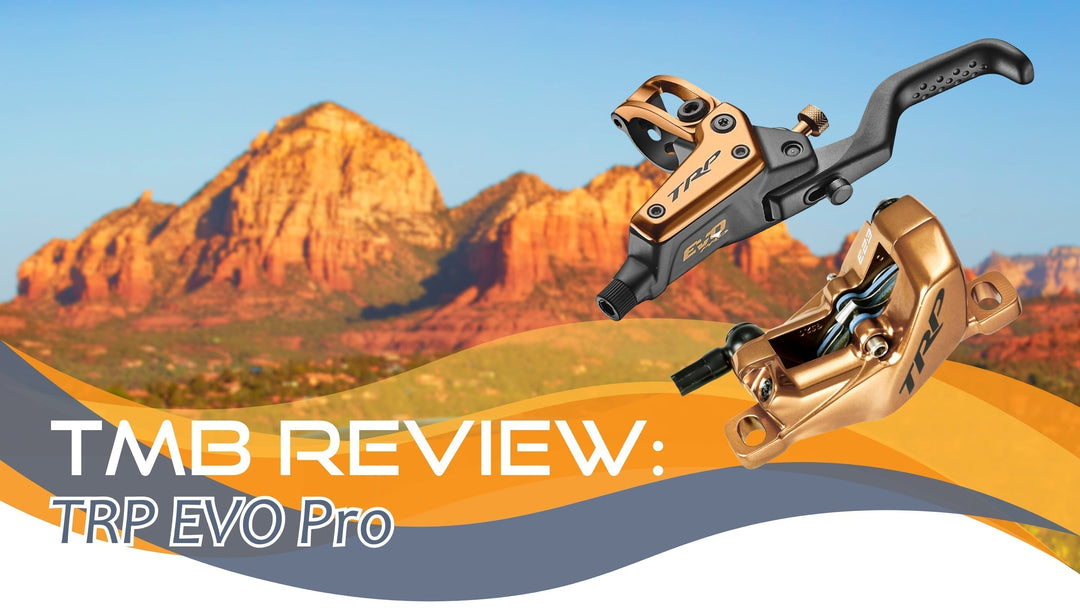Hardtail vs. Full Suspension Mountain Bikes: Our Ultimate Guide

If you're in the market for a new mountain bike and looking where to start, most likely, you have come across the age-old debate of "hardtail vs. full suspension." This article aims to give you some pros and cons of each, with our honest bias towards full suspension mountain bikes.
Our reason is simple. Since we ride in Sedona, Arizona, and most of our local trails are rocky and technical, a full suspension mountain bike simply provides more traction and stability, making the already challenging trails much more manageable.

Think of it like a rugged Jeep trail; using a Jeep with big tires and purpose-built shocks will make it much safer and fun than if you were to take a stock SUV down that same trail.
Since a hardtail mountain bike only has a shock on the front end, the rear end will bounce around all over the trail, causing a loss of traction and making the ride much bumpier on your body.
Another theme that always comes up in the hardtail vs. full suspension debate is that beginners should start on a hardtail mountain bike. The reason being is that it helps you develop fundamental skills that you may skip over if starting on a full suspension mountain bike.
Well, from our standpoint, with rocky trails everywhere, our take is that it's better to start on a full suspension mountain bike!
We feel it's important to start gaining confidence with every ride, quickly learning what the bike is capable of, rather than getting bogged down by every obstacle in the trail.
Those fundamental skills will still develop over time anyway, and having FUN is the most important part! A full suspension mountain bike simply gets the fun going quickest.
Is a Hardtail Mountain Bike For You?
There are still some great points for choosing a hardtail mountain bike; let's explore some of the main benefits.
First, especially if you're new to the sport of mountain biking, hardtail mountain bikes are generally less expensive and provide a lower cost of entry into mountain biking. Here at Thunder Mountain Bikes, a hardtail mountain bike that can handle Sedona trails (like a Trek Roscoe model), is about $1,000 - $1,400 less than our entry-level full suspension mountain bike (like a Trek Fuel EX model).
The second big reason, hardtail mountain bikes are simpler and easier to maintain. Since there's no rear shock, there are fewer moving parts to maintain, and you won't need to worry about properly setting up the rear shock. You can just get out and ride!
Especially in rainy and muddy areas, a hardtail mountain bike will be exponentially easier to clean and maintain.
Another significant factor is your location. If you live in an area with smooth, flowy trails, a hardtail mountain bike can be totally suitable to get started on. A hardtail can also feel easier on smooth uphills with its lighter weight.
But if your local trails offer a mixture of both smooth and challenging rides - trust us - it's only a matter of time till you'll want to explore the challenging terrain. If you can see this in your long-term mountain biking goals, we'd highly recommend spending the extra to start with a full suspension mountain bike!
Hardtail mountain bikes aren't just for novice riders, though; we see plenty of experienced mountain bikers with custom-built hardtails that cost more than most full suspension bikes.
With skill and experience, you can become comfortable pushing your limits on almost any type of bike.
The simplicity, efficiency, extra challenge, and honing your skills are all excellent reasons for experienced riders to have a hardtail mountain bike in their stable.
Pros & Cons Of Hardtail Mountain Bikes
|
|
|
|---|---|
|
ProsLower cost Less Maintenance Lighter weight and more responsive |
ConsHarsh ride on bumpy terrain Less margin for error Can be fatiguing and hard on your body |
When is Full Suspension the Way to Go?

As you can probably tell, we feel there are plenty of reasons to go for a full suspension mountain bike.
While the initial cost is usually higher, we feel that's a marginal cost when considering the many benefits. Think of it as a bit of extra insurance, as the front and rear suspension increases your margin of error and can save you from crashing.
At some point, we all make mistakes on the trail. Whether it's hitting a rock you don't see or rolling a drop you didn't anticipate; a full suspension mountain bike has more potential to soak it all up and keep you on the right track.
An additional bit of insurance is that your body won't be as sore from mountain biking. A properly set up, full suspension helps to smooth out the trail and takes the edge off every bump, rather than your body absorbing each bump.
While mountain biking is a physically demanding sport, no matter what you ride, your body will take less abuse with a full suspension bike.
Full suspension obviously helps on the downhills and rough sections of trails, but another common thought is that it's a drawback when climbing uphill.
Here in Sedona, with our rocky uphills, we find that full suspension bikes climb better than hardtail bikes, despite the extra weight. This is all due to the rear shock allowing your rear tire to get and keep more traction through tricky lines.
With solid traction, you're better able to keep your body in a neutral position, making the climbs more comfortable and manageable. In technical places like Sedona, having the lightest bike definitely isn't everything!
Pros & Cons Of Full Suspension Mountain Bikes
|
|
|
|---|---|
|
ProsMore confidence-inspiring in challenging terrain Easier on your body and joints More traction and stability Adds safety and room for errors |
ConsMore expensive More maintenance required Needs proper setup to work well Heavier and can feel sluggish when pedaling |
Choose Your Bike for How YOU Ride

Hopefully, this article has given you new perspectives on the hardtail vs. full suspension debate.
Full suspension bikes have come a long way over the past 20 years, overcoming the shortcomings they initially had and gaining well-earned popularity. While hardtails continue to have a die-hard fan base and are the starting point for many with their more economical price tags.
In Sedona, we often get novice mountain bikers or road bikers who perceive full suspension bikes as only being needed for 'extreme' biking.
But in reality, 'extreme' biking comes down to each rider's experience and skill - no matter what bike they're on. Think of full suspension bikes as a tool to make the sport safer and your ride smoother, regardless of if you're riding beginner or intermediate level trails.
Ultimately, whichever bike you feel most comfortable on is the best way to go.
If you have the opportunity to rent or demo a few bikes, the proof is in the pudding and there's no better way to find exactly the bike you want to ride. We encourage you to try out as many as you can!








